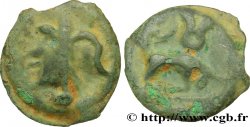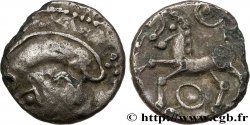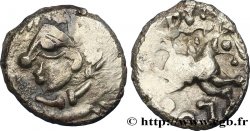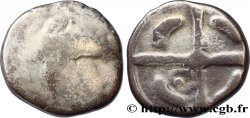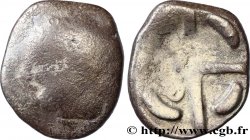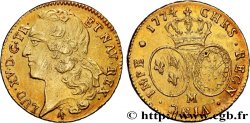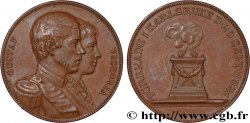v38_1535 - GALLIA - GALLIA DELLO SETTENTRIONALE - ÆDUI (BIBRACTE, Regione dello Mont-Beuvray) Quart de statère en électrum à la lyre, type de Chenôves
MONNAIES 38 (2009)
起拍价 : 500.00 €
估价 : 900.00 €
竞价记录 : 640.00 €
出价数量 : 4
最高出价 : 820.00 €
起拍价 : 500.00 €
估价 : 900.00 €
竞价记录 : 640.00 €
出价数量 : 4
最高出价 : 820.00 €
种类 Quart de statère en électrum à la lyre, type de Chenôves
日期: c. 70-50 AC.
铸币厂名称/城市 Autun (71)
材质 electrum
直径 11 mm
模子方针 7 h.
重量 1,45 g.
稀少度 R2
关于品相的说明
Bel exemplaire pour cette exacte réduction modulaire du statère. Métal rouge, cuivreux, avec une très belle patine irisée et brillante, surtout au droit. Les types sont complets et bien centrés sur ce flan un peu court, avec un droit légèrement moins détaillé que le revers
出版目录中的项代码 :
家谱
Cette monnaie provient de la collection M. R. de Dijon
正面
正面的文字 ANÉPIGRAPHE.
正面的说明书 Tête humaine laurée à droite, la chevelure stylisée ; grènetis.
背面
背面的文字 ANÉPIGRAPHE.
背面的说明书 Cheval galopant à droite ; au-dessus du cheval, l'aurige ; lyre sous le cheval.
评论
Ces monnaies du type de Chenôves se divisent en deux types ; à la lyre (classe I) ou à la rouelle (classe II). Le traitement de la chevelure correspond exactement à celle du statère DT. 3176 avec les mèches en forme de goutte et aux extrémités enroulées, ainsi qu’au denier à la lyre, DT. 3182 et 3183.
Sur cet exemplaire, le revers est un peu confus, comme si le flan avait été précédemment frappé mais de façon très décentrée puis refrappé (?).
Sur cet exemplaire, le revers est un peu confus, comme si le flan avait été précédemment frappé mais de façon très décentrée puis refrappé (?).








 对产品描述纠错
对产品描述纠错 打印
打印 分享我的选择
分享我的选择 提问
提问 Consign / sell
Consign / sell
 产品介绍
产品介绍